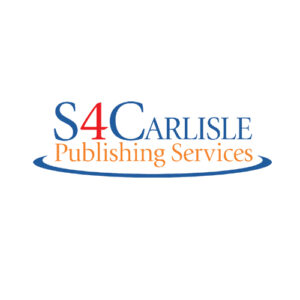Ease of access Obstacles In eLearning
There is a statistic that L&D teams ought to consider when they develop and release any kind of worker knowing. According to the Journal of Learning Disabilities,approximately 10% to 15% of workers in any large market or organization have finding out disabilities. Most of our contemporary eLearning services concentrated on employee learning and training are designed with an individual with no knowing, cognitive, or handicaps in mind. Yet, as the statistic pointed out above makes plain, lots of markets make use of the services of workers with some form of finding out disability or other.
The obstacle then for eLearning suppliers and discovering experience designers is to create eLearning material and finding out experiences that are without any kind of bias and easily accessible to all type of learners. This article will take a look at the accessibility challenges that need to be dealt with to ensure an equal opportunity for all learners.
Determining Learning Disabilities
A considerable difficulty for both the private employees and HR or L&D managers is the capability to recognize specific discovering disabilities. Some individuals may not understand that they have a discovering condition and might wonder why they are not able to learn and complete a compulsory digital learning course that other co-workers can finish easily. This is the reason employment applications are developing to accommodate details about any specials needs that prospective applicants might want to willingly reveal. Learning disabilities are classified as follows:
- Dyslexia
A reading disorder that is associated with individuals skipping syllables and letters while reading and writing. - Dyscalculia
This condition causes intense problem when making arithmetic calculations and performing fundamental operations like addition, reproduction, or department of numbers. - Dysgraphia
This is focused on obstacles dealt with in writing. Individuals tend to skip words and letters and have confusion in spelling words and using punctuation marks. - Dyspraxia
This is a particular issue that causes people to have concerns with company and planning and adjusting to scenarios.
It is necessary to note that ADHD or attention deficit disorder and autism are not finding out disabilities. An important aspect to likewise note is that approximately half of the people with autism do have some kind of finding out impairment.
There are particularly developed tests for both adults and young students that help specialists identify specific learning impairments and disorders. Recently, we are seeing an increasing number of private organizations including psychological profiling and personality type tests to help determine how a possible staff member will act in a critical situation and this is once again an extension of such tests.
Main Availability Challenges That Learners With Disabilities Confront with eLearning
A few of the availability challenges that learners with disabilities face when participating in an eLearning training program are noted below:
1. The Absence Of Closed Captions Or Subtitles
Subtitles add value to the material. Individuals who are slow to understand the audio or video interactions on the screen can follow the subtitles instead, to understand what is taking place.
2. Too Many Clickable Activities
People with troubles in moving their hands quickly or who have issues with hand-eye coordination will fight with a course which has a lot of clickable components and activities. For such learners, there need to be a choice to complete the course with minimum clicks on the learning journey.
3. Fancy Animation And Loud Background Music
Some learners can be set off by fancy animation, intense lights, and loud sounds or music. Learning experience designers ought to tone down the special impacts. They need to keep in mind that they are creating finding out programs.
4. Uncertain, Or Absence Of, Clear On-Screen Instructions
Anybody who has spent time on a course that has an inadequately developed interface will accept the truth that it can be extremely annoying not to know where to click to advance to the next page/screen, or not to know what the next actions are for the learner to perform. Knowing experience designers should focus on the user and learner experience and provide clear navigation directions within the eLearning program.
Designing Inclusive And Available eLearning
As eLearning suppliers of prominence, the focus is on us to take the effort and develop inclusive and accessible eLearning courses. It is not enough to simply produce courses that represent people from diverse races, various genders, and cultures. It is likewise crucial to attend to the various learners who make up the labor force. Some may have a known physical disability, others might have a known or unknown learning impairment, which does not assist them complete the eLearning program. For that reason, it is very important to keep an open mind and be accommodative of the various challenges that a varied knowing audience deals with, and to address them to the very best of our abilities.
This can be done by embracing simple style and material tweaks. We ought to make sure that the learner and User Experience journeys are properly designed and use the optimal experience. Making use of standardized style components, colors that are easy on the eyes, easy characters and icons, the right background voice for narrative, and correct subtitles rather of machine-generated captions, can go a long way in making our eLearning programs much better and appropriate for a broader audience. If the pioneering leaders of the eLearning market and groups like ATD can sit together and come up with a set of guidelines that can be embraced by all, it would make things easier for everybody. What do you believe? What actions is your organization taking to make its eLearning programs more inclusive and available to all? We would love to hear your thoughts on the subject.
Additional Reading:

S4Carlisle Publishing Providers We bring the best mix of pedagogy and andragogy, instructional imagination, content, and apt use of new-age technology to deliver top quality options to fulfill your learning and training needs.



















